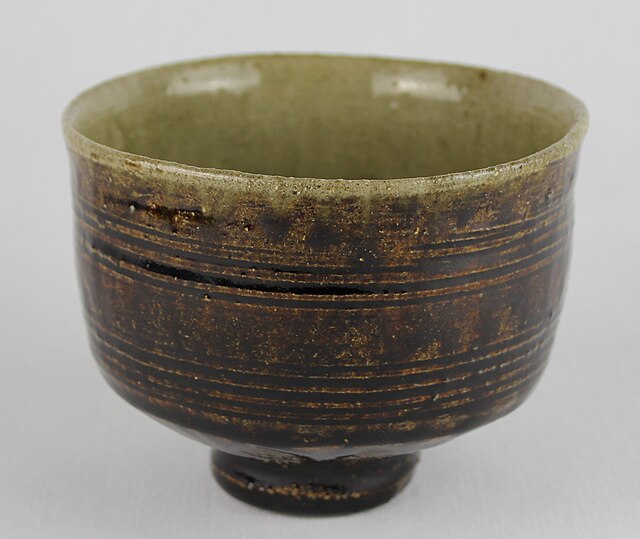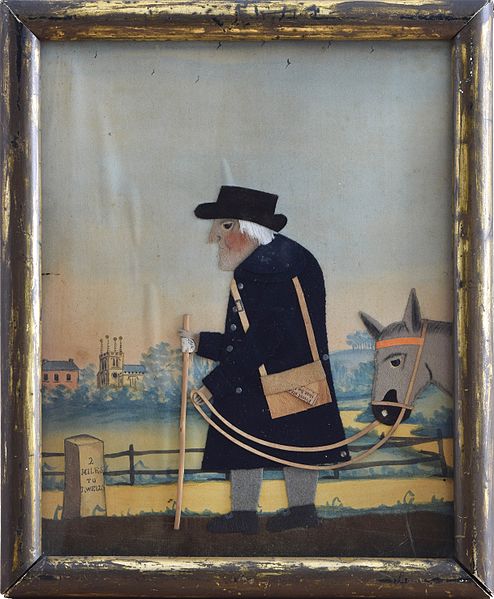The concept of mingei (民芸), variously translated into English as "folk craft", "folk art" or "popular art", was developed from the mid-1920s in Japan by a philosopher and aesthete, Yanagi Sōetsu (1889–1961), together with a group of craftsmen, including the potters Hamada Shōji (1894–1978) and Kawai Kanjirō (1890–1966). As such, it was a conscious attempt to distinguish ordinary crafts and functional utensils from "higher" forms of art – at the time much admired by people during a period when Japan was going through rapid westernisation, industrialisation, and urban growth. In some ways, therefore, mingei may be seen as a reaction to Japan's rapid modernisation processes.
Thrown, combed tea bowl by Shōji Hamada
Leather Fireman's Coat, late 19th century. Brooklyn Museum
Thrown bowl by Bernard Leach
Inu-Hariko (Papier-mache Puppy Doll), ca. 1950. Brooklyn Museum
Folk art covers all forms of visual art made in the context of folk culture. Definitions vary, but generally the objects have practical utility of some kind, rather than being exclusively decorative. The makers of folk art are typically trained within a popular tradition, rather than in the fine art tradition of the culture. There is often overlap, or contested ground with 'naive art'. "Folk art" is not used in regard to traditional societies where ethnographic art continue to be made.
Pew group of Staffordshire figures, England, c. 1745, salt-glazed stoneware. 7 1/2 × 8 3/8 in. (19.1 × 21.3 cm)
"Gran calavera eléctrica" by José Guadalupe Posada, Mexico, 1900–1913
"Old Bright, The Postman", George Smart, c1830s
Traditional styles of faience pottery from Székely Land, Romania, on sale in Budapest in 2014. A conventional idea of folk art, though no doubt made in quasi-industrial conditions.








